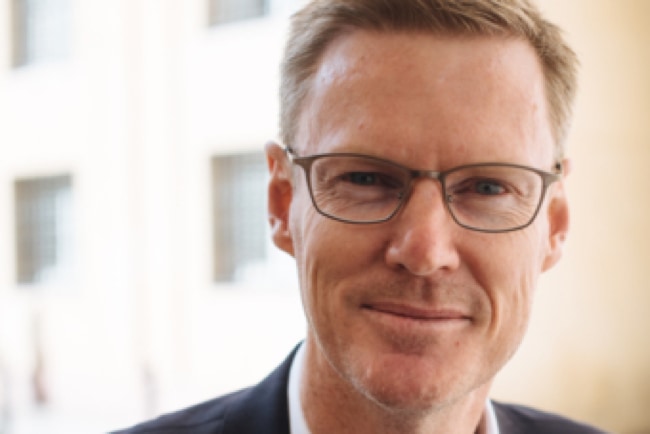
 Francis Klonowski needed a knee replacement operation. He wasn’t excited about it for obvious reasons, but luckily for us he really paid attention to the process he was taken through by his medical team (and yes, it was a team, not an individual, just like in our profession). There are some fantastic lessons here that we can take from his observations.
Francis Klonowski needed a knee replacement operation. He wasn’t excited about it for obvious reasons, but luckily for us he really paid attention to the process he was taken through by his medical team (and yes, it was a team, not an individual, just like in our profession). There are some fantastic lessons here that we can take from his observations.
Over to you Francis.
When you’re the client (Part 1)
After putting it off for over 5 years, I finally agreed to have a knee replacement. I was apprehensive right up to the date of the operation: What if it didn’t really need doing? Could I manage a bit longer?
What if it didn’t actually work? After all, it’s not like a department store. You can’t take it back if you don’t like it. In fact, I’d probably left it a year too long, giving the other knee a chance to deteriorate.
It gave me some empathy with clients who postpone difficult financial decisions.
Although an NHS patient, I was referred to a private hospital for the operation. I’m not sure how that works, but I wasn’t going to object. From my very first visit I found myself observing the way these other professionals worked, and I learnt so much that could be applied to our own profession and practice management.
The Consultation
Within seconds of entering the hospital I’d learnt something new from the receptionist, as she confirmed I was there to see Mr Calder about a “procedure”. Not an operation, a procedure : it may only be a word, but somehow it suggested a different approach, a defined process, rather than just an “operation”. In fact, the operation itself was only a part of this process.
On seeing the X-rays and showing me where the problem was the consultant said “I’m just surprised you’ve left it this long”. He then explained what would happen, while sparing me the gory details of the operation itself: the type of joint he would fit, how I would feel afterwards, how long it might take to recover, and how I would benefit long-term. He dispelled certain myths and, perhaps most importantly, explained the risks and how they are controlled.
By the end of the consultation I was clear about what was involved, but I also knew not to expect instant results. In other words he was “managing expectations”. I could see the value of this in client situations, explaining the process that we would take them through, and how long it might be before they feel the real benefits.
We can also dispel certain myths early in the relationship.
Further Information
For further information about my “procedure” Mr Calder referred me to a website, which turned out to be a specialist knee clinic run by three consultants, including Mr Calder himself. There I was able to read about his background, his specialist knowledge and experience. It was interesting that he hadn’t thought it necessary to tell me all this when we met, and I hadn’t felt the need to ask. I read more about my condition of osteoarthritis, and the knee replacement procedure. It wasn’t new information, more a reminder of what I’d been told.
Just as clients need a reminder afterwards of what we discuss during our meetings.
The site also featured case studies of previous patients describing their experiences. At first I was hesitant about reading it, but discovered the very first one exactly mirrored my own situation : sports injury in his 20s requiring cartilage operation; osteoarthritis developing later in life; putting off treatment for several years; and ultimately a whole new lease on life.
I could see the value of adding similar case studies to my own website, as prospective clients could identify with certain scenarios, while I would be portraying the kind of situations where I felt I could add most value.
I’m often asked about “assets under management” as this seems to be a benchmark for the success of a financial planning firm. I wonder if these three consultants are ever asked how many knees they have under management? Just a thought.
Pre-Op Assessment
This seemed like the analysis part of our financial planning process. I was at the hospital for two hours, undergoing a series of tests and completing a questionnaire with a senior nurse. It was a long questionnaire running to several pages and very comprehensive, about my general health and lifestyle, assessing my ability to undertake the operation and how I would cope afterwards.
The equivalent of our fact-finding?
At no time did the nurse feel the need to apologise for the length of the questionnaire or the in-depth nature of the questions, nor did I feel the need to query it. It just seemed a natural part of the process, and of course it was done very professionally. The consultant himself wasn’t even present. I didn’t feel shortchanged by that. Another lesson perhaps?
The Assessment ended with the physiotherapist. She explained what would happen immediately after the operation, and in the ensuing weeks. It was all about the positives; what I would be expected and able to do – not about what I’d be unable to do. There was great emphasis on how much I would need to contribute to the process if it was going to be successful.
I was especially impressed with how information was stored and used between departments. In all I had seen four different people, only one of whom worked for the hospital : yet each one linked together to form the whole process.
So outsourcing can work?
I was given a folder with lots of further information : booklets about knee replacement, pain relief, infection control in hospitals. We often read advisers’ comments about clients being given too much information, asserting that “they don’t read all this stuff”. I’m not so sure. I read and re-read everything in that folder, because I wanted to understand more and be fully prepared.
Fees
Most of the procedures carried out at a hospital like this are “elective”, i.e. the individual chooses to have them done. While not having to pay directly, I did look at the charges for some of them – especially mine. A drop-down box showed exactly what was included : the consultations before and after, the procedure itself, and the number of physiotherapy sessions. Simple and clear, and perhaps something we can apply to our own fee structures.
Next week we’ll hear more about how the medical team handled some serious push back from Francis when it came to his anaesthetic. It’s fascinating to see how they professionally dealt with his concerns and got him to do what was best for them and him. That is, they didn’t let the client run the show.
See you next week for Part 2.




0 comments to " Lessons From Other Professions – When You’re The Client (Part 1) "